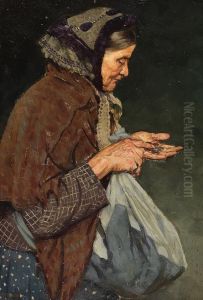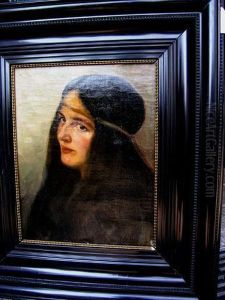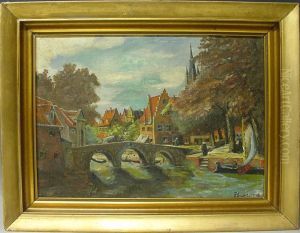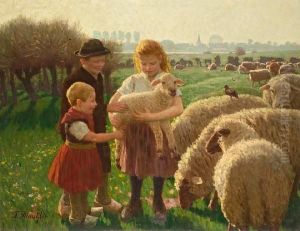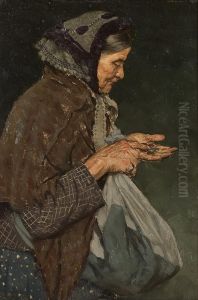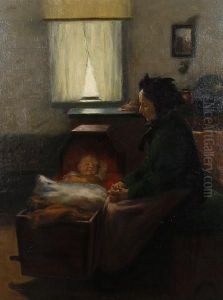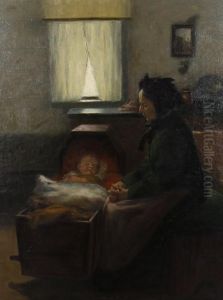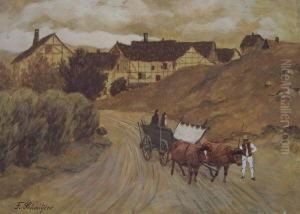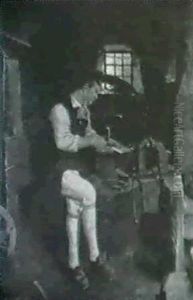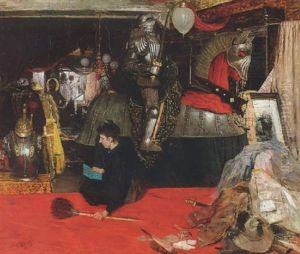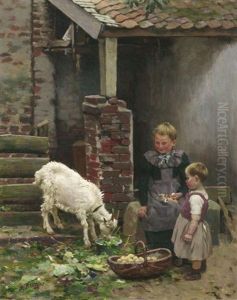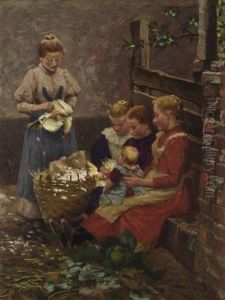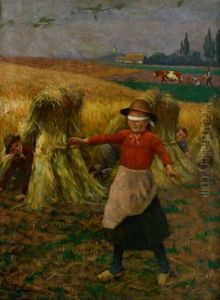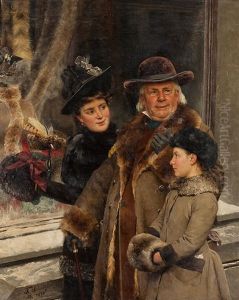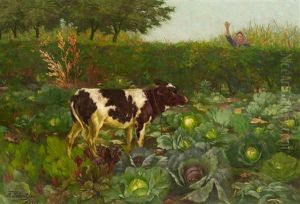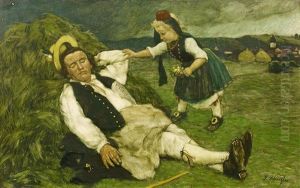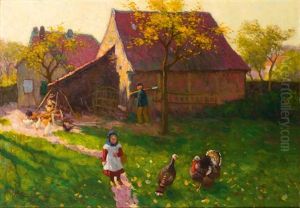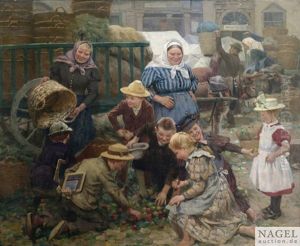Fritz Schnitzler Paintings
Fritz Schnitzler was a German painter and printmaker who was active during the late 19th and early 20th centuries. Born on November 14, 1870, in Oberndorf am Neckar, Germany, Schnitzler was primarily known for his landscape paintings and his involvement in the art nouveau movement, which was known in Germany as Jugendstil.
Schnitzler's artistic education began at the Stuttgart Art School, where he honed his skills under the guidance of established artists. He later moved to Munich, which was a major center for art and culture in Germany at that time. In Munich, Schnitzler was influenced by the secessionist movement, which sought to break away from the academic art conventions of the time.
Over the course of his career, Schnitzler developed a style characterized by a delicate sense of color and a preference for serene, idyllic landscapes. His works often depicted the countryside of southern Germany, capturing the changing seasons and the rural way of life. In addition to landscapes, he also produced a number of portraits and genre scenes.
Schnitzler's work was well received during his lifetime. He participated in numerous exhibitions and was a member of various artistic associations. Despite the political and social upheavals of the early 20th century, including the two World Wars, Schnitzler continued to work and exhibit his art.
Fritz Schnitzler passed away on July 23, 1957, in Oberndorf am Neckar, leaving behind a body of work that contributes to our understanding of German art at the turn of the century. His paintings are held in private collections and museums, and they continue to be appreciated for their quiet beauty and technical skill.
